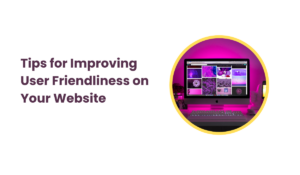
How to Resolve Merge Conflicts in Salesforce?
Salesforce development as a collaborative process forces administrators and developers who share the same org to experience merge conflicts through their daily work. Once developers learn appropriate methods for tackling merger conflicts, they will find these issues become manageable professional challenges. The following instructions teach you how to comprehend and fix merger conflicts within Salesforce while giving you the expertise to take them on.
What Is a Merge Conflict?
Two or more developers creating different modifications on identical Salesforce metadata elements inside isolated sandboxes results in a merger conflict. These elements include custom fields along with Apex classes and Visualforce pages. The Salesforce system fails to pick between conflicting changes because developers try to transfer their updates to shared version control or environment systems.
The appearance of merger conflicts stems from two different developers working on identical Salesforce components. It does not represent any technical error. Humans must intervene when the system encounters identical changes because it is incapable of either selecting one version or combining both successfully. Salesforce encounters conflicts over different metadata such as Apex code and both profiles and permission sets and workflow rules.
Read: Small Space, Big Impact: Smart Renovation Ideas for Tiny Homes
Common Scenarios Leading to Conflicts
The following practices enhance the occurrence of merge conflicts in Salesforce systems:
- Prolonged Isolation in Development: Designers working alone in isolated sandboxes throughout extensive development times tend to separate from the main codebase which produces conflicts when merging code later.
- Direct Editing of Production Environments: The direct modification of production codebases under unmanaged version control proves to be both a main trigger for merger conflicts and a method that harms system stability.
- Communication Breakdowns: When developers fail to maintain clear communication methods in their assignments the result leads to two developers working on identical metadata simultaneously.
- Large Teams and Interdependent Features: Multiple developers maintaining closely interdependent features leads to rising probabilities of overlapping modifications within their collaborative project.
Proactive Strategies to Prevent Conflicts
The prevention of merge conflicts requires organizations to adopt preventive measures:
- Frequent Integration: The development team must commit their work toward the common codebase on a regular basis. Small frequent code merges create better management and decrease the chance of producing major conflicts among developers.
- Feature Branching: The team should use Feature Branching as a strategy for developers to work on separate feature branches until each completed and tested feature gets merged properly into the main branch. Such a process decreases potential conflicts.
- Clear Communication and Task Assignment: The team achieves alignment during component changes with defined responsibilities for areas of modification which reduces work duplication between developers.
- Smaller Changesets: Developers should adopt the practice of splitting big work assignments into multiple small change sets. The split approach controls how much code goes into each merger thus decreasing the chance of version conflicts.
- Utilize Salesforce Developer Tools: Development tools from Salesforce should be utilized to forecast forthcoming merger conflicts during the early development stages.
How to Resolve Merge Conflicts
When a merge conflict arises, follow this methodical process to resolve it effectively:
- Identify the Conflict: Your version control system or deployment tool will flag the files or metadata components with conflicts. Address these as soon as possible.
- Examine the Differences: Use a dedicated merge tool to compare the conflicting versions. These tools highlight the differences, making it easier to see what changed and where.
- Understand the Intent: Communicate with the other developer(s) involved to understand the intent behind each change. This context is crucial in making informed decisions during the resolution.
- Decide on Changes to Keep: Based on the understanding of each change’s intent, determine which version or elements to keep. Sometimes, a combined approach is necessary, where parts of both versions are integrated to create a functional resolution.
- Manually Edit the Conflicting File: Use the merge tool or a text editor to carefully incorporate the selected changes or combine the versions. This step requires attention to detail and an understanding of Salesforce’s metadata structure.
- Mark the Conflict as Resolved: Once the conflict is addressed, mark the file as resolved in your version control system. This signals that the merger is complete.
- Test Thoroughly: After merging, deploy the changes to a sandbox environment and perform rigorous testing to ensure that the resolution hasn’t introduced new issues or broken existing functionality.
- Communicate the Resolution: Inform the team about how the conflict was resolved, especially if complex decisions were made. This helps others understand the resolution and can prevent similar issues in the future.
Best Practices for Conflict Resolution
Organizations should implement three essential best practices to enhance their conflict resolution procedures:
- Prioritize Accuracy Over Speed: The understanding of changes requires more priority than resolution speed so aim for accuracy first in each situation. Quick choices end in incorrect solutions.
- Collaborate When Needed: Other developers should be accessible for cooperation when help is needed. The addition of teamwork provides critical situations for improved outcomes throughout conflict resolutions.
- Leverage Version Control: A properly controlled version system should stay in place because it enables precise change tracking and conflict resolution. Team members should master the capabilities of the system’s features.
- Keep Sandboxes Up to Date: Regular refresh of sandboxes helps maintain their real-time updates with primary source code. Regular updates of sandboxes significantly decrease the potential for major disparities between different versions of the codebase.
- Master Merge Tools: Perfected Usage of Integrated Version Control Tools for Merge Operations and Comparison Functions Between Different Versions. The tools help majorly speed up the conflict discovery and its subsequent resolution method.
Conclusion:
Organizations using collaborative Salesforce development need to understand that merge conflicts occur naturally yet following proactive measures leads to minimized conflicts along with successful resolution. Salesforce teams can confidently handle merging conflicts through clear communication methods together with version control systems along with standard practices that prevent and resolve conflicts. You should treat merger conflicts like opportunities instead of obstacles to accomplish teamwork while making code better and developing your working methods. All Salesforce developers must learn to handle merger conflicts since they face these situations often in their modern collaborative work environment.

